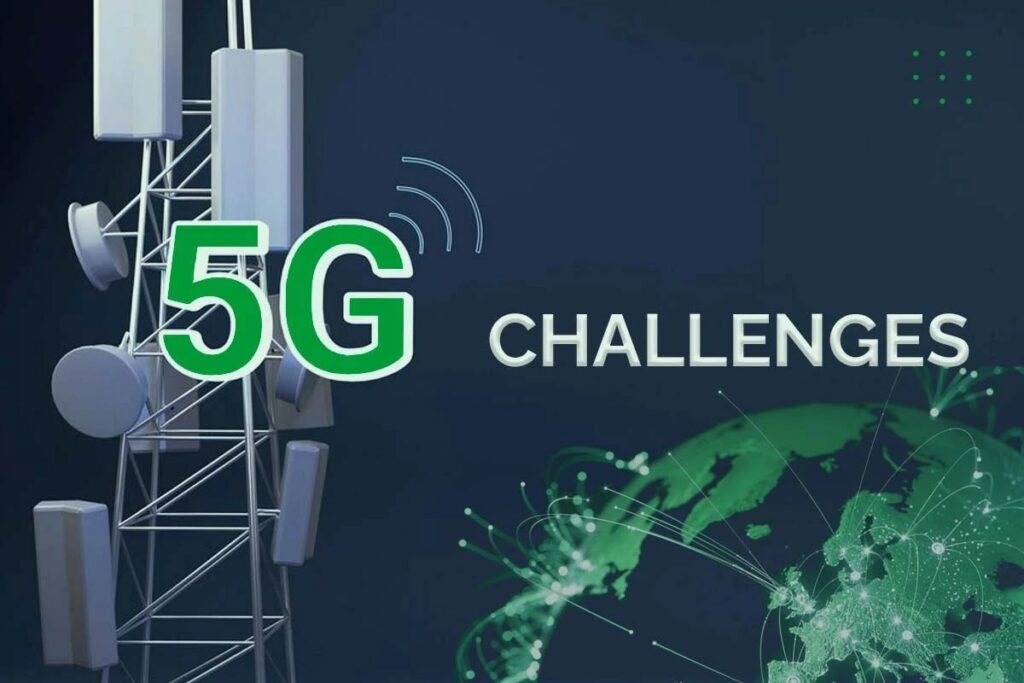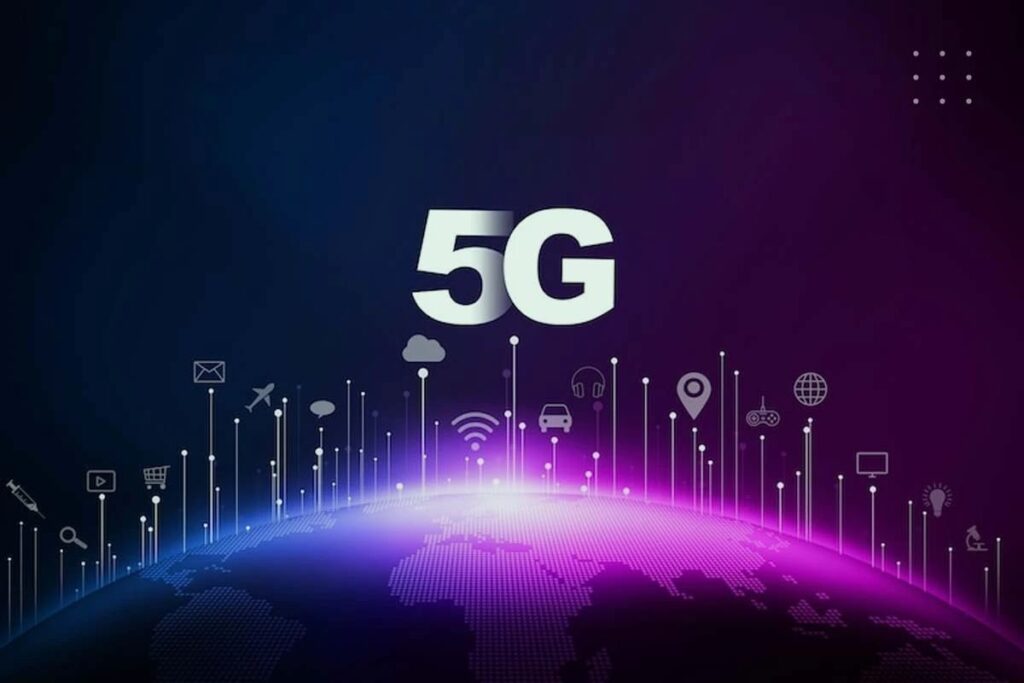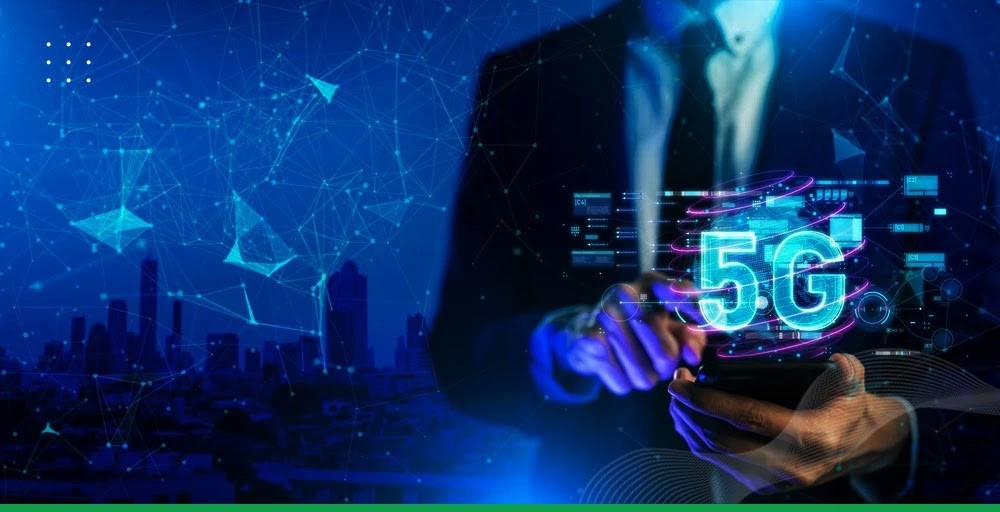Today, we live in a world where digital technologies have impacted every aspect of our life. In this digital world, connectivity is crucial to connect, communicate, and improve productivity in our day-to-day life. Using 5G networks to connect the world, this blog post explores how connectivity might look in the future.
5G is a new and recent innovation in mobile networks that has the potential to shape the way we talk and work. This technology helps businesses to boost their productivity and enhance their communication.
A Brief Overview on 5G Networks
5G stands for the “Fifth generation”. It is a wireless technology that can virtually connect everyone and everything, which will make our connections faster and better.
The 5G network allows data delivery at higher speeds and provides lower latency, more reliability, and increased availability. This technology empowers user experience and connects industries with its high performance and efficiency.
1G, 2G, 3G, and 4G networks are easily outshined by the 5G network. This technology is significantly faster, has lower latency, has more capacity, and is a unified platform that is more capable than previous networks.
Evolution of Connectivity

Let’s look at the evolution of mobile networks to understand the importance of the 5G network. 1G is the first generation of mobile networks launched in Tokyo by Nippon Telegraph and Telephone (NTT), which delivered only analog voices.
2G is the second generation that introduced digital voice, and 3G is the third generation of mobile networks that brought mobile data. 4G LTE, the fourth generation of mobile networks, is capable of delivering fast and secure internet connection.
5G, or fifth generation, was started in 2018 but got properly underway in 2019. It offers numerous benefits, including faster downloads and streaming, more reliable connections, and lower latency. A VoIP phone system can greatly benefit from a 5G network as it provides seamless communication with higher speed and lower latency.
Let’s compare these technologies on the basis of the introduced year, technology, internet service, bandwidth, advantages, and applications.
| Basis | 1G | 2G | 3G | 4G | 5G |
| Introduced Year | 1979 | 1993 | 2001 | 2009 | 2018 |
| Technology | Analog System | GSM | WCDMA | LTE, WiMAX | MIMO, mm Waves |
| Internet Service | Narrowband | Narrowband | Broadband | Ultra-broadband | Wireless World Wide Web |
| Bandwidth | 2.4 Kbps | 25 MHz | 25MHz | 100MHz | 30GHz to 300 GHz |
| Advantages | Simple network elements | Multimedia features such as SMS and MMS, internet access, and SIM introduced | High security and international roaming | High-speed and global mobility | Extremely high speeds and low latency |
| Applications | Voice calls | Voice calls and short messages | Video conferencing, mobile TV, and GPS | High-speed applications and wearable devices | High-resolution video and live streaming, remote control robots and vehicles |
Understanding 5G Networks
5G networks require higher frequency bands to operate, enabling faster data transmission and lower latency. Unlike the previous mobile networks, 5G technology uses advanced techniques like MIMO (Multiple-Input Multiple-Output) and NOMA (non-orthogonal multiple access) to provide wider coverage and support a large number of connected devices.
Benefits of 5G Connectivity

5G connectivity has brought so many benefits to mobile technology. This advanced technology is expected to provide a platform for new innovations and opportunities for businesses and different industries.
The major advantages of 5G technology are higher speed, lower latency, increased bandwidth, wider availability and coverage, and increased device connectivity. Let’s discuss each one of them in more detail.
-
Higher Speed
5G is extremely faster in speed than any of the other networks. The average speed of 5G is 130 Mbps which is almost four times faster than the 4G network. Users can experience super fast download, upload, and transfer of the data.
Furthermore, it allows users to have seamless streaming, lag-free gaming, and access files and programs without waiting for a long time.
-
Lower Latency
Latency is the amount of time that a signal takes to travel from its source to its receiver. The goal of wireless networks has been to reduce latency. With 5G connectivity, the latency of the network is significantly decreased.
The low latency of 5G can transform any industry, whether it is manufacturing, retail, or healthcare. Using sensors and reduced latency, anyone can remotely control industrial machinery, logistics, surgical procedures, and automated transportation.
-
Increased Bandwidth
Transmission of larger amounts of data is possible with the high-speed connection 5G provides. It allows for optimizing network traffic and the smooth handling of sudden increases in data usage.
Higher bandwidth allows crowded venues like stadiums to provide seamless connectivity to large audiences. Audiences can live stream their experience from any seat in the stadium with 5G connectivity.
-
Wider Availability and Coverage
5G offers wider availability and coverage as it operates across a wider range of frequency bands: high mid, and low frequencies. This variation enables it to cover different types of environments and distances.
Moreover, 5G technology uses the beamforming technique, which focuses and directs signals to specific devices. This increases efficiency and extends coverage in targeted locations.
-
Increased Device Connectivity
The 5G network allows to connect many devices simultaneously, which has given rise to the Internet of Things (IoT). It has enabled smart homes, smart cities, and automation on a larger scale.
Real-time exchange of information can be done with the instant connection between all connected devices and the internet. Hundreds of connected devices will send and receive information at a faster speed.
👉You may also want to read: Real-World Applications of the Internet of Things (IoT)
Challenges of 5G Connectivity

5G technology has the potential to change many aspects of our life and help businesses stay competitive. However, we should look at the challenges it has. Some challenges of 5G connectivity are given below:
-
High Expense
5G network requires expensive hardware components, which can significantly increase operating expenses. Keeping operating and maintenance costs low is challenging for 5G network.
Furthermore, 5G networks must be tested, configured, and managed regularly, increasing more expenses.
-
Strong and Reliable Network
A strong and reliable network is essential for 5G connectivity to provide consistent connectivity. It is especially crucial in emergency services. For example, to trigger a warning during critical situations, an ultra-reliable network is significant for applications to operate smoothly and provide information in perfect time.
-
Huge Data Volume
The advancement of technology increases the volume of data as well. The network should be capable enough to support a huge volume of data. 5G is an advanced technology, so it is challenging for a 5G network to support high-resolution video calling, live streaming, and downloading of big data files.
-
Privacy and Security
5G network has to provide robust security to its end users. It could be challenging for 5G networks as the number of devices connected to the network is huge. The nature of the G5 network is highly distributed, so it must protect its users from potential security threats that may arise.
Implications for Industries and Society

The influence of the 5G network is not limited to faster internet speed, it goes beyond it and has the potential to revolutionize different industries and society. Let’s look at the implications of the 5G network.
Business and Enterprise: Businesses can leverage the benefits of the 5G network’s capabilities to create new opportunities for innovation and growth. The manufacturing, transportation, health care, and education sector can get real-time data analysis to improve efficiency.
Healthcare: The 5G network has many implications in healthcare, from telemedicine to remote patient monitoring. Moreover, 5G is efficient in remote areas to provide faster and more reliable healthcare services.
Transportation: By using 5G connectivity, the transportation industry can reduce traffic congestion and improve road safety as 5G enables to have real-time communication between connected and autonomous vehicles.
Smart cities: 5G connectivity is one of the main components that assist in enabling smart cities. With its higher internet speed and lower latency, interconnected devices can improve urban services, streamline operations, and enhance energy efficiency.
Conclusion
5G network is the future of connectivity, shaping today’s digital world. The benefits it provides, such as higher speed, lower latency, and increased bandwidth and device connectivity, it has the potential to impact every industry and our personal life.
However, we need to consider some challenges to 5G connectivity, including high expense, a requirement for a strong and reliable network, and privacy and security considerations. For more fascinating information on tech-related topics, visit us at Techwebtopic.
FAQs
What is the connectivity of 5G?
The ability of devices and systems to communicate and interact with each other over a 5G network is the connectivity of 5G. 5G connectivity is specified by several key features, such as speed, latency, reliability, and coverage.
What is the connection speed of 5G?
The average connection speed of 5G is 10 Gbps which is 100 times faster than 4G.
What is the fullform of 5G?
5G stands for the fifth generation. After 1G, 2G, 3G, and 4G, which are previous generations of mobile networks, it is the fifth generation.
What are the benefits of a 5G network?
The benefits of a 5G network are higher speed, lower latency, increased bandwidth, wider availability and coverage, and increased device connectivity.
How is 5G different from 4G?
The major difference between 4G and 5G is the latency. 5G offers lower latency which is less than 5 ms. There is a big difference in download speed between these two networks, the download speed of 4G is 1 Gbps, and on the other hand, the download speed of 5G is 20 Gbps.








